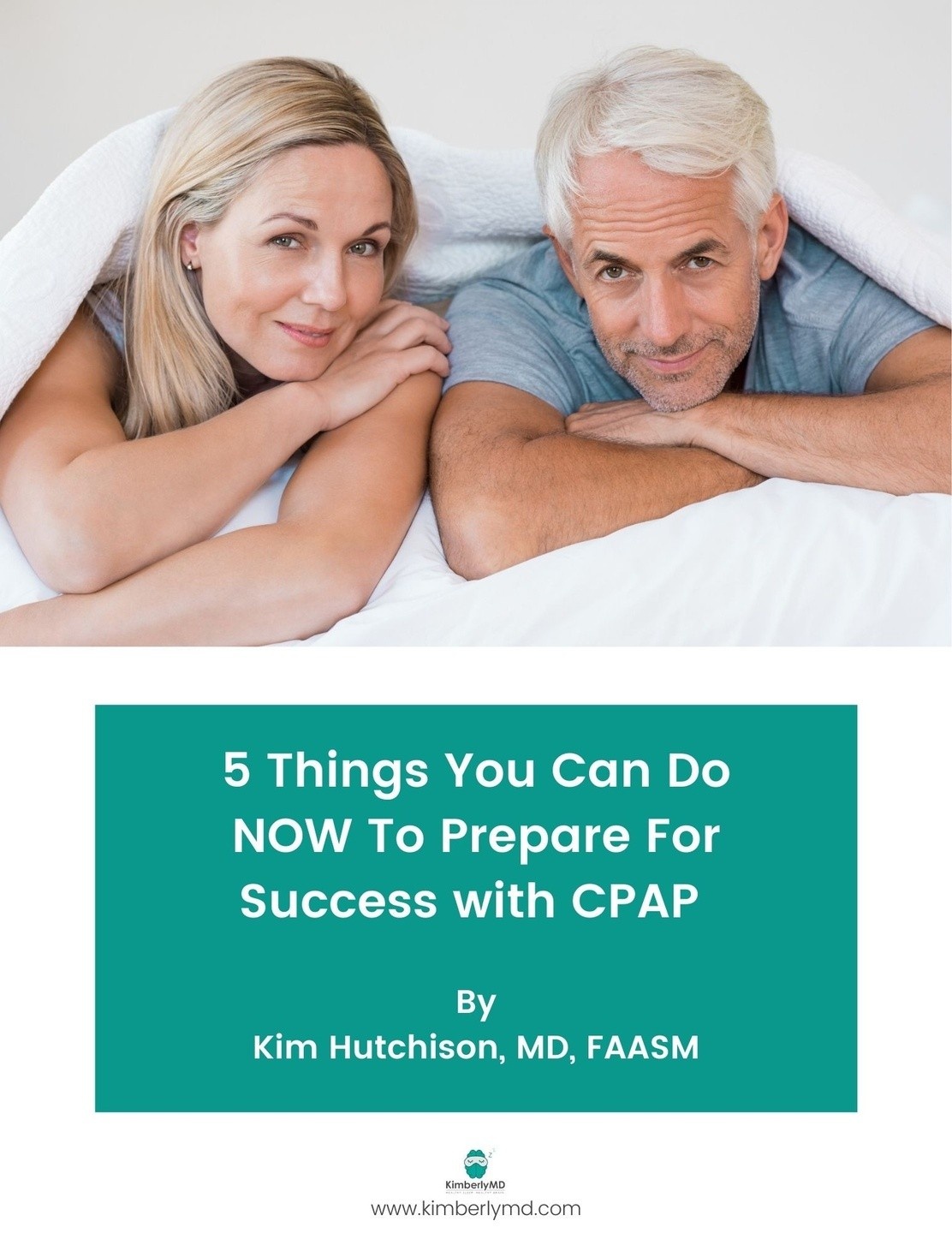12 Helpful CPAP Tips You May Not Know - Part 2
12 Helpful CPAP Tips You May Not Know - Part 2
Hello Seep Warrior, this is Kenny McCollum at KimberlyMD.com and this is part two of twelve helpful CPAP tips you may not know, and here we go!
#7. Pulling off the mask at night. I hear this a lot. so, the one solution is to buy a chin strap and place it over the top of the mask. So, you cannot do this with all masks but there are several masks that you can place a chin strap over the top of the mask including a nasal pillow, nasal and a few full-face tight masks. The other option that is not as popular a solution is just to change to a mask with a sturdier headgear. The example on the left the P10 nasal pillow mask does not really have a very sturdy headgear it is just a loop at the back of the head, and it is easy to pull off at night. So sometimes switching to, for example the mask on the right, the N20 nasal mask which has a sturdier headgear, can help to keep the mask in place, it is just not as easy to pull off.
#8 Irritation from the mass cushion. So, the solution, mask cushion pads such as the Remzee or Snugz or other mask cushion pads, there are a few varieties out there. These are just little inexpensive pads that you put over the silicone cushion that acts as a barrier between your skin and the cushion itself and can help with skin breakdown that the cushion can cause.
#9 Break down on the bridge of your nose. Solution, Gecko pads or other nose pads or, foam mask cushions like the ResMed N20 or ResMed F20 AirTouch. The ResMed gecko pad is just a little silicone cushion that you place on the bridge of your those. There are a couple of other manufacturers that make equivalent items. There are also the AirTouch cushions, and they are just a little softer, so they are great for skin breakdown on the bridge of the nose.
#10 Headgear causing marks or discomfort. The solution, headgear padding so there are companies like Pad-a-Cheek that design pads specifically for CPAP mask headgear for all masks out there. You can look these companies are online, just search for CPAP mask headgear pads for custom-made pads. #11 Rain out for a non-heated tube. So, what is rain out? Rain out is when heated air cools in the tube and reaches the mask as water or when the condensation builds up in your tube. So here are the solutions for a non-heated tubing. Increasing the temperature of your room. Keeping the tube under the blanket with you as much as possible. Lowering the humidity on the machine. Closing any windows and making sure that no fans are blowing on the tube, etc. Tube wraps, which we have already discussed. Basically, keeping the tube as warm and as dry as possible is going to help keep condensation out of the tube and the mask for a non-heated tube
#12 Rain out with a heated tubing. one of the best solutions Is to increase the temperature of the tube as high as you can tolerate it. the default range for most tubes on most machines is about 80 to 82 degrees and on most units, it goes up to about 87 degrees. So, you may need to periodically increase the tube temperature to prevent rain out, it is not a set it and forget it situation. the same temperature that works in the summer may not work in the winter as the seasons change, you are going to have to adjust the temperature to prevent rain out I find this especially true as summer turns into winter. As it gets colder, I usually get a lot of calls about rain out I usually tell people to just increase the temperature on their tube and that takes care of it. I would like to note that the auto tube setting on CPAP machines usually only works well in very static climates or home environments. So, if you live in an environment where the humidity and temperature is always the same or your home environment is always the same the auto setting on the CPAP will work well but that is usually not the case for most people. if you are having issues with rain out or alternatively, humidity issues switch your machine over to manual and try that. I have found that they just have not perfected that technology yet.
I hope you found some helpful information from this two-part series, I will be working on some additional CPAP tips for upcoming sleep tech bytes until then if you would like additional support Kimberly md.com offers a CPAP 101 course which is designed especially for new CPAP users or, if you prefer a more personalized experience, we also offer group coaching or individual coaching with me, Kenny McCollum.
Thank you and until next time, sleep well!



